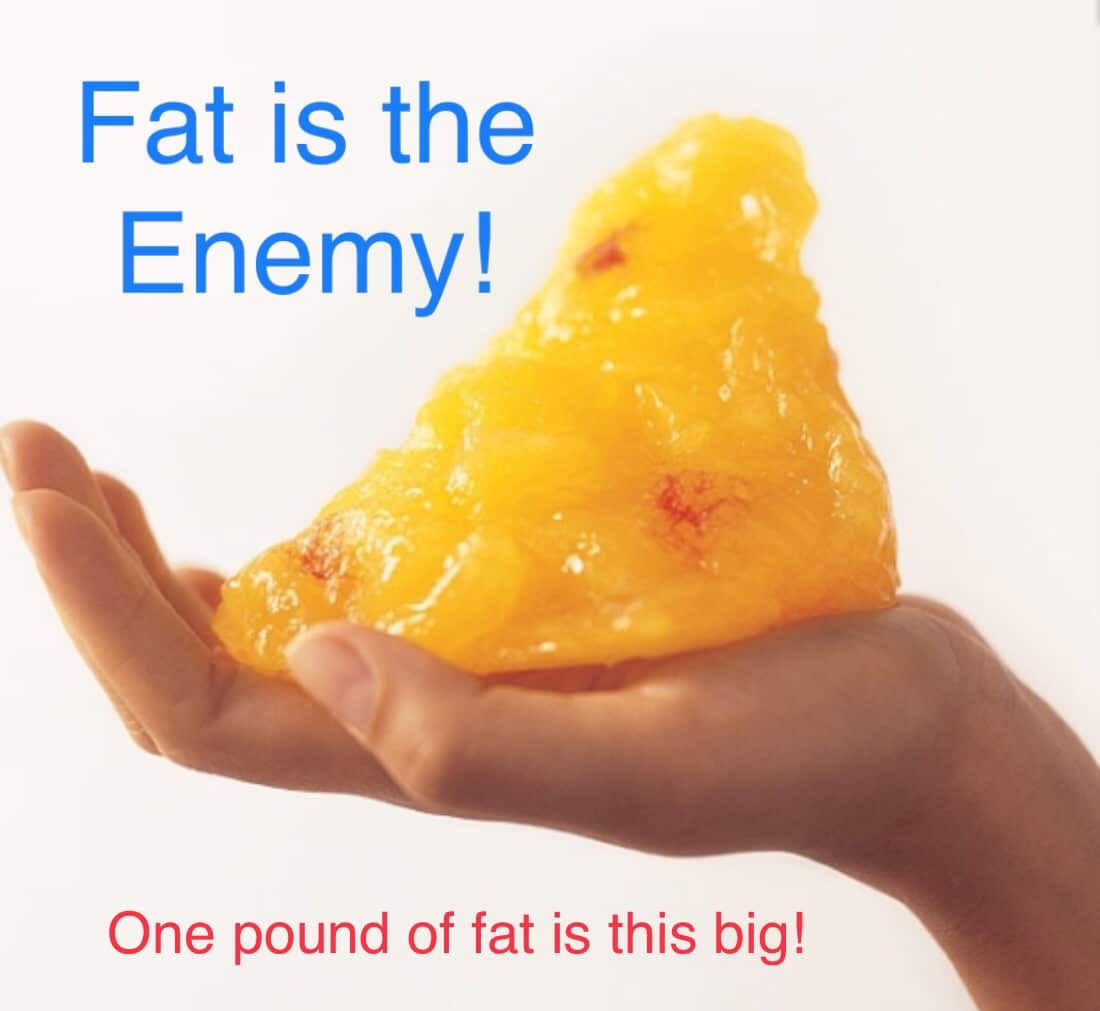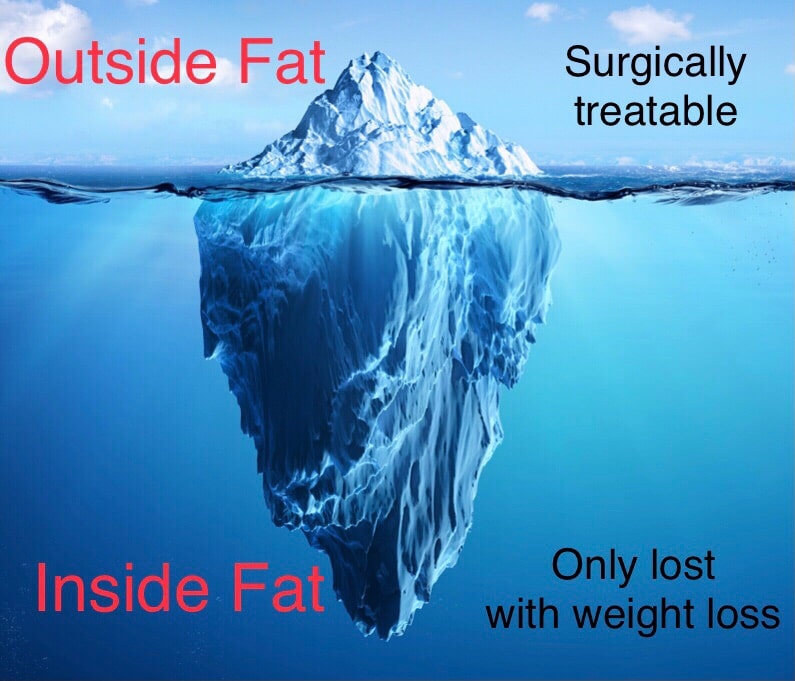The goal of many cosmetic surgery operations is to reduce fat. Procedures cut out the fat, suck out the fat, and remove the fat. Fat is the enemy! However, some fat can’t be surgically targeted or removed. It is safely hidden inside us. This is called inside fat. This is the information that is reviewed in this educational writing. It will also review the role of diet, exercise, and nutrition to reduce fat levels even more than surgery can do. This writing was done at the request of a patient from Philadelphia, PA.

Most people know that Americans have too much fat. Two thirds of people are overweight or obese. Food portions are excessively large. Meals are not healthy. Decades of “super-sized” foods and “big gulp” drinks have left us with excess weight and fat. These are just some of the factors that have led us to be large and overweight. This excess fat has led to increased desire for cosmetic and plastic surgery. Liposuction and tummy tucks target fat removal and help us get rid of fat. But it can’t get rid of it all!
Inside Versus Outside Fat
If fat is the enemy, we most know more about it and understand it better to successfully lose it. Fat cells are present all over our body. They are beneath the skin of the face, hands, legs, arms, breasts, and stomach. The fat cells coat our entire body. They accumulate in some areas more than others, and this can vary from individual to individual. Some people get large or fat in their breasts and stomachs. Some get fat in their butts and legs. This is why some people have different shapes like apple or pear. This is the fat that is outside and just beneath the skin. It’s the fat that can be targeted by cosmetic surgery operations like an abdominoplasty or liposuction. This is outside fat.

What is fascinating is this fat that is beneath the skin is just the tip of the iceberg in terms of the total fat we have in our body. Most of the fat is inside fat. This is the fat that is around our intestines and organs and inside our abdominal cavity. This inside fat is also called intraabdominal fat or visceral fat. To say it another way, the fat that we see outside or beneath our skin is outside. It’s called outside because it’s not around our organs. It’s the fat you can grab and surgically remove and suction. This type of fat makes up a small percentage of all the fat we have in our body. The inside or visceral fat makes up the vast majority of the fat we have. It’s the fat that is not accessible to cosmetic surgery. It’s the fat that can only be lost by weight loss. This is inside fat.
Tummy Tuck
A pound of fat is almost the size of a grapefruit. For many people, if they are more than ten pounds overweight, they have ten pounds of inside fat or fat inside their abdomen. This is the size of a baby. Many people literally have a baby sized amount of fat inside. This has clinical significance for tummy tucks. Why? With most tummy tucks the abdominal muscles are repaired or tightened. This means that too much inside fat can put pressure from the inside onto the muscle repair. It can push on the muscles like a pregnancy does and lead to weakening. Weight loss in this case is very important to decrease inside fat causing pressure on the muscle repair. Weight loss will also make us thinner and flatter and give us better results. Please see the educational writing on weight loss before or after tummy tuck surgery.Click here.
Liposuction
Liposuction is literally sucking out excess fat. As I have said, “Fat is the enemy.” It’s important to try and lose weight after liposuction. If we are trying to look smaller and thinner, liposuction can help us achieve these goals. But any weight gain will be counterproductive. It only takes a couple of pounds of weight gain to noticeably worsen liposuction results. More positively, any weight loss will make the results even better. Patients that lose weight will see even more dramatic results and increase satisfaction with the operation.
Nutrition, Diet, and Exercise
Nutrition, diet, and exercise are the key methods to reduce fat and lose weight. Small frequent meals and diets that follow the food pyramid have been shown to give the most success. Diets high in vegetables and fruits will give the fat reduction desired. After cosmetic surgery, I work closely with my patients to help them get educated about diets and nutrition. It takes a lot of effort to make a diet work. But it can lead to better results with liposuction and abdominoplasty operations.
Summary
Many cosmetic surgery procedures focus on removing and reducing unwanted fat. Many Americans are overweight, and excess fat is a result of this. Losing weight is extremely important to help a patient get the best results. Weight loss will reduce fat cells and make you smaller and thinner. Weight loss will shrink inside fat that is not able to be removed with an operation. Proper nutrition, diet, and exercise are the keys to weight reduction. If fat is the enemy, then the focus is on fat loss to heal well and to get the best results.

